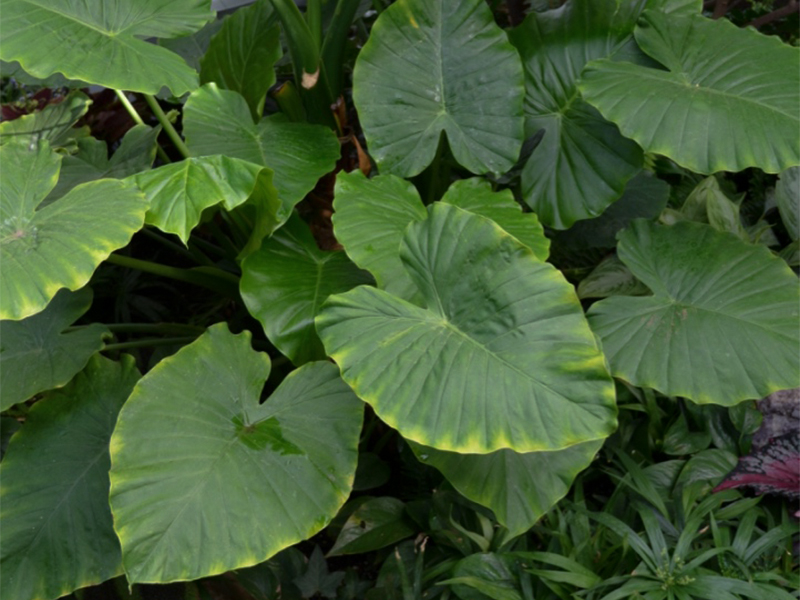
Perennials, Tropicals > Alocasia > Alocasia calidora > Alocasia calidora
Alocasia calidora
Elephant’s Ears, Elephant Ears
Origin: South and southeast Asia.
| Family |
| Araceae |
| Genus |
| Alocasia |
| Species |
| calidora |
| Category |
| Perennials, Tropicals |
| Type |
| Shrub (evergreen) |
| USDA Hardiness Zone |
| 7b - 10b |
| Canadian Hardiness Zone |
| Requires cold season protection under glass. |
| RHS Hardiness Zone |
| H2 - H5 |
| Temperature (°C) |
| -15 - 5 |
| Temperature (°F) |
| 5 - 41 |
| Height |
| Up to 4.5 m |
Photographs
Description and Growing Information
Flowering Period
| General Description |
| Large plant grown for its distinct leaves. |
| Cultivation |
| Grow in filtered light and partial shade, with moist but well drained soil of moderate fertility. Prefers high humidity, ample water, and fertilize every 2 - 3 weeks during the growing season. Cut back on water in the winter. |
| Pests |
| Fungal and bacterial leaf diseases, mealybugs, and scale insects. |
| Bark/Stem Description |
| Rhizomatous or tuberous roots. |
| Leaf Description |
| Large, veined, can be either arrow-shaped or heart-shaped. |
| Flower Description |
| Flowers are small. |
| Colour Description |
| Leaves are green and can be marked with black, dark purple, or bronze. |
| Notable Specimens |
| Centennial Conservatory, Thunder Bay, Ontario, Canada. |
| Propagation |
| Plant as soon as the seed ripens. Divide the rhizomes, separate offsets, or root stem cuttings in spring or summer. |
| Ethnobotanical Uses (Disclaimer) |
| Sap can cause skin irritation. If any part of the plant is eaten, it can cause mild indigestion. |
